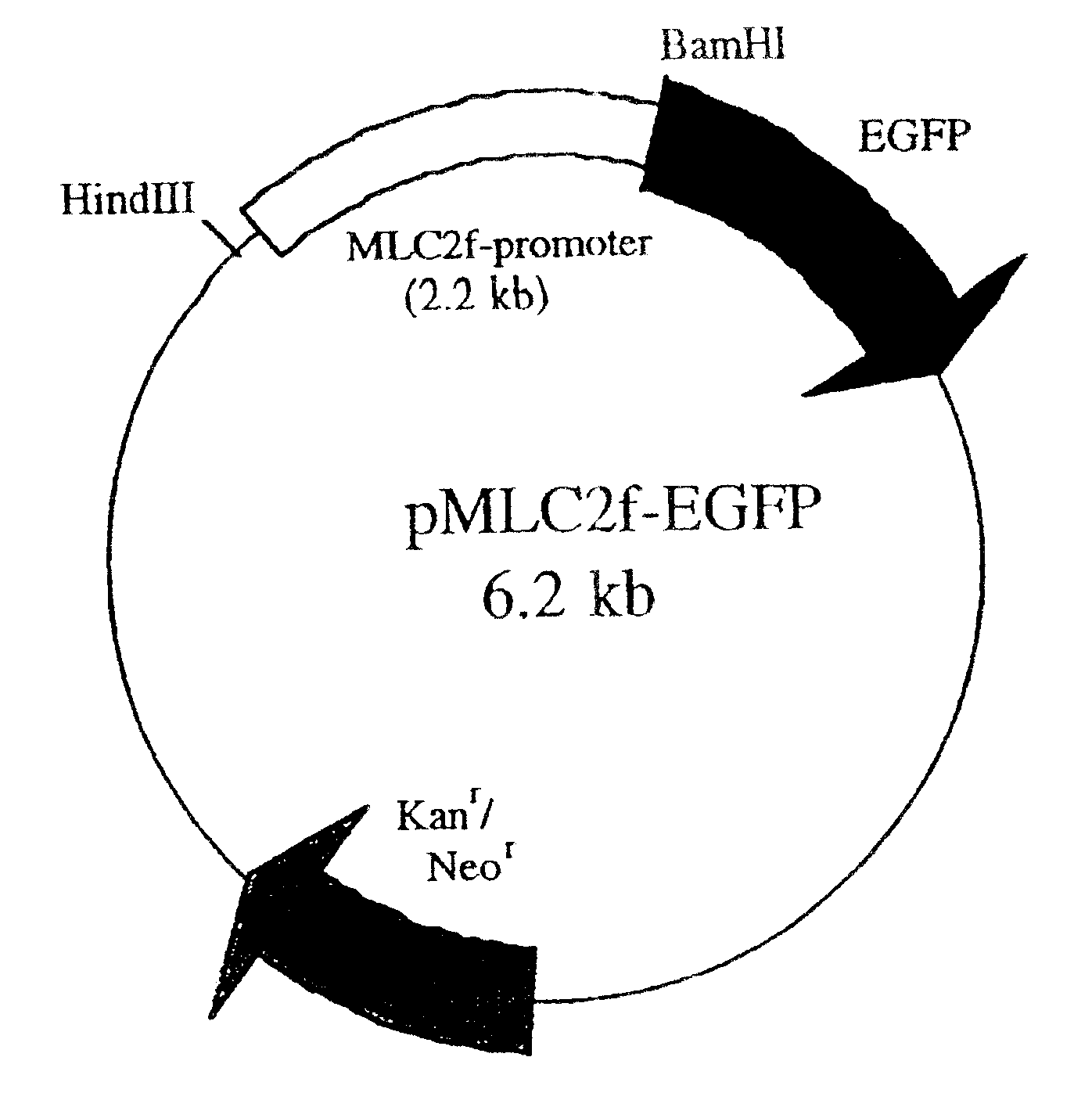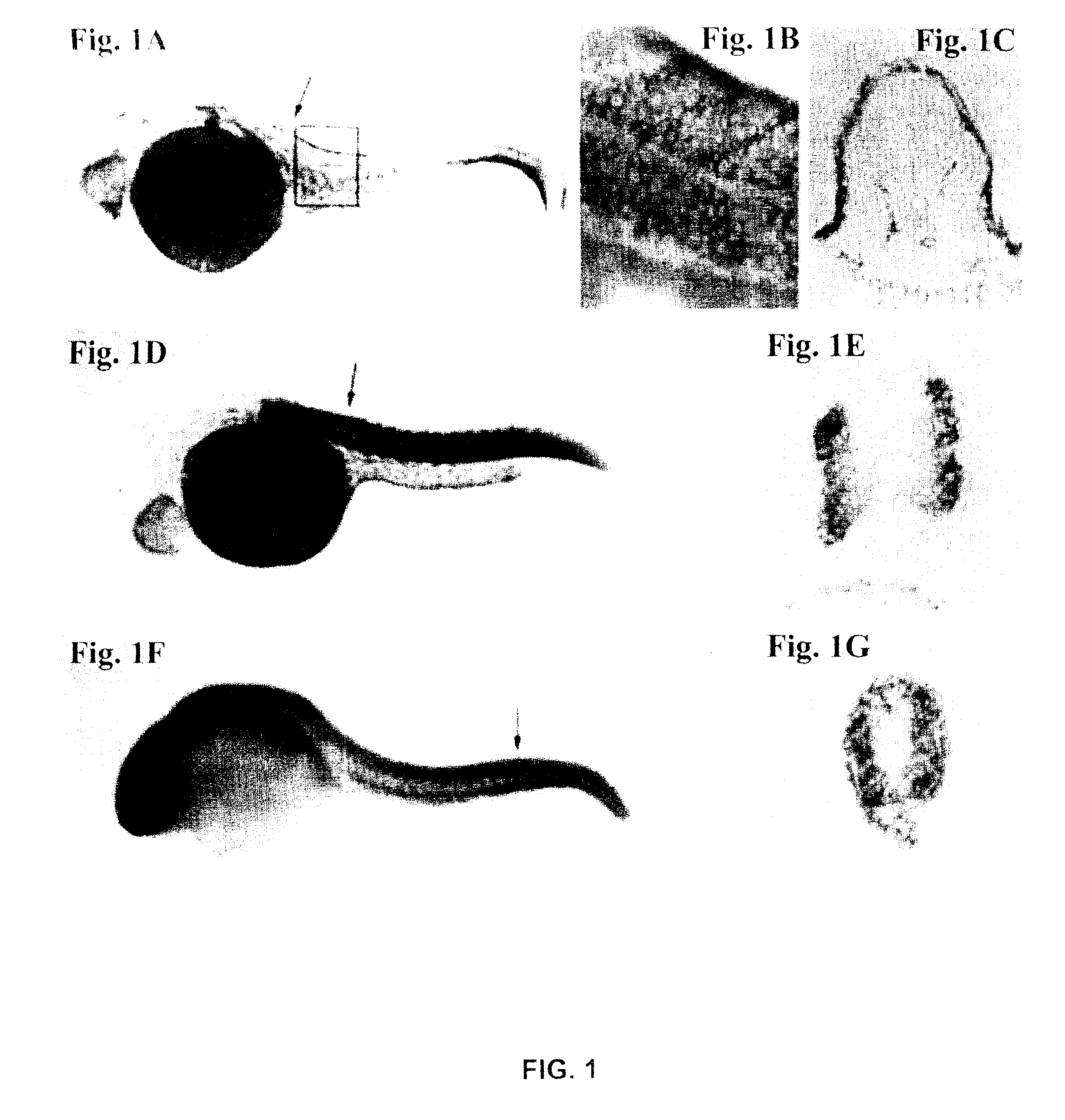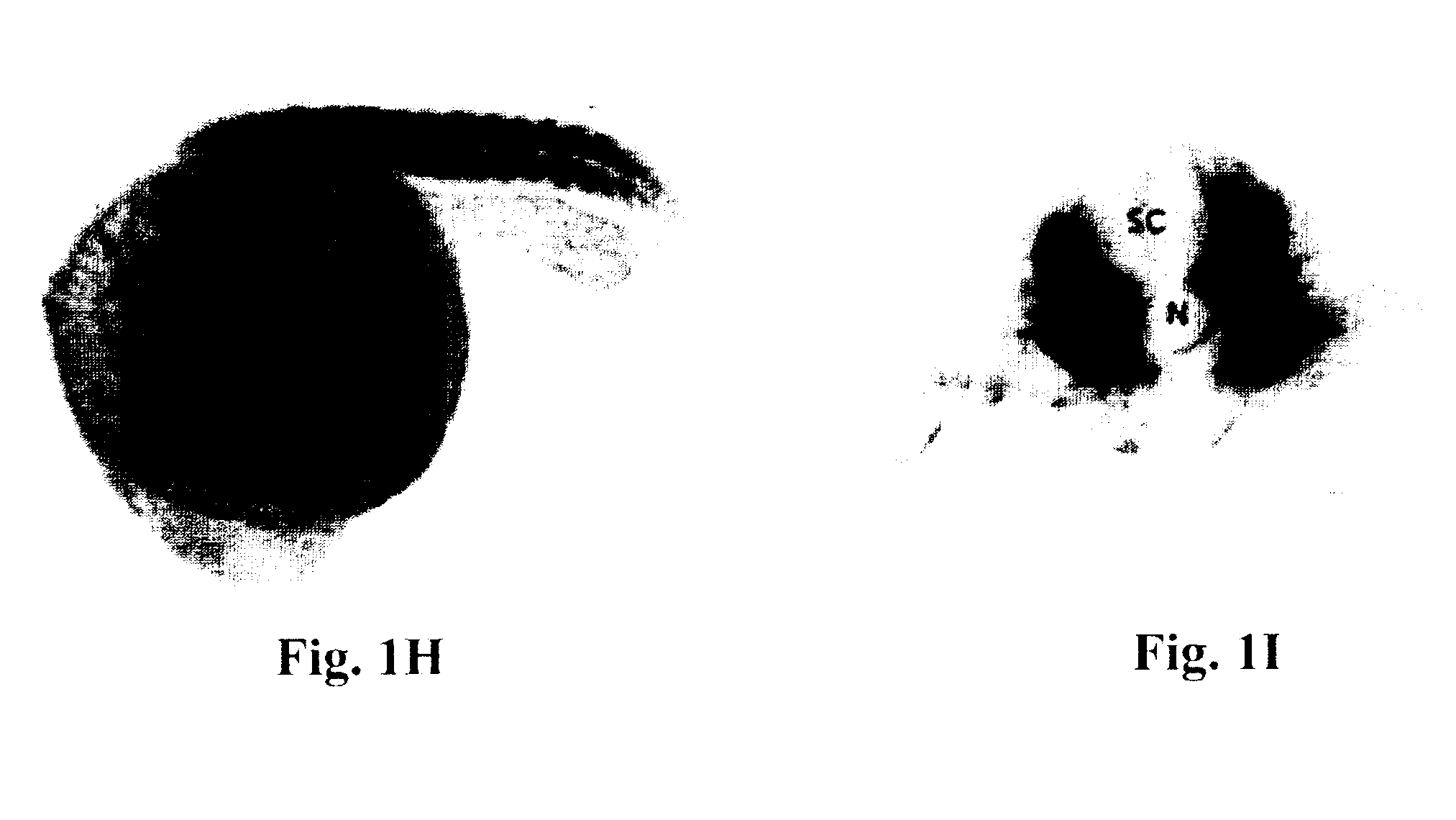Chimeric gene constructs for generation of fluorescent transgenic ornamental fish
- Summary
- Abstract
- Description
- Claims
- Application Information
AI Technical Summary
Benefits of technology
Problems solved by technology
Method used
Image
Examples
example i
Isolation of Skin-Specific, Muscle-Specific and Ubiquitously Expressed Zebrafish cDNA Clones
[0060] cDNA clones were isolated and sequenced as described by Gong et al. (1997). Basically, random cDNA clones were selected from zebrafish embryonic and adult cDNA libraries and each clone was partially sequenced by a single sequencing reaction. The partial sequences were then used to identify the sequenced clones for potential function and tissue specificity. Of the distinct clones identified by this approach, four of them were selected: for skin specificity (clone A39 encoding cytokeratin, CK), for muscle specificity (clone E146 encoding muscle creatine kinase, MCK), for skeletal muscle specificity (clone A113 encoding the fast skeletal muscle isoform of the myosin light chain 2, MLC2f) and for ubiquitous expression (clone A150 encoding acidic ribosomal protein P0, ARP), respectively.
[0061] The four cDNA clones were sequenced, and their complete cDNA sequences with deduced amino acid seq...
example ii
Isolation of Zebrafish Gene Promoters
[0067] Four zebrafish gene promoters were isolated by a linker-mediated PCR method as described by Liao et al., (1997) and as exemplified by the diagrams in FIG. 3. The whole procedure includes the following steps: 1) designing of gene specific primers; 2) isolation of zebrafish genomic DNA; 3) digestion of genomic DNA by a restriction enzyme; 4) ligation of a short linker DNA to the digested genomic DNA; 5) PCR amplification of the promoter region; and 6) DNA sequencing to confirm the cloned DNA fragment. The following is the detailed description of these steps.
[0068] 1. Designing of gene specific primers. Gene specific PCR primers were designed based on the 5' end of the four cDNA sequences and the regions used for designing the primers are shown in SEQ ID NOS: 1, 3, 5 and 20.
[0069] The two cytokeratin gene specific primers are:CK1 (SEQ ID NO:10)CK2 (SEQ ID NO:11), where the first six nucleotides are for creation of an EcoRI site to facilitate ...
example iii
Generation of Green Fluorescent Transgenic Fish
[0079] The isolated zebrafish gene promoters were inserted into the plasmid pEGFP-1 (Clonetech), which contains an EGFP structural gene whose codons have been optimized according to preferable human codons. Three promoter fragments were inserted into pEGFP-1 at the EcoRI and BamHI site and the resulting recombinant plasmids were named pCK-EGFP (FIG. 4), pMCK-EGFP (FIG. 5), and pARP-EGFP, respectively (FIG. 6). The promoter fragment for the MLC2f gene was inserted into the Hind III and Bam HI sites of the plasmid pEGFP-1 and the resulting chimeric DNA construct, pMLC2f-EGFP, is diagramed in FIG. 7.
[0080] Linearized plasmid DNAs at a concentrations of 500 .mu.g / ml (for pCK-EGFP and pMCK-EGFP) and 100 .mu.g / ml (for pMLC2f-EGFP) in 0.1 M Tris-HCl (pH 7.6) / 0.25% phenol red were injected into the cytoplasm of 1-or 2-cell stage embryos. Because of a high mortality rate, pARP-EGFP was injected at a lower concentration (50 .mu.g / ml). Each embryo...
PUM
| Property | Measurement | Unit |
|---|---|---|
| Nanoscale particle size | aaaaa | aaaaa |
| Nanoscale particle size | aaaaa | aaaaa |
| Nanoscale particle size | aaaaa | aaaaa |
Abstract
Description
Claims
Application Information
 Login to View More
Login to View More - R&D
- Intellectual Property
- Life Sciences
- Materials
- Tech Scout
- Unparalleled Data Quality
- Higher Quality Content
- 60% Fewer Hallucinations
Browse by: Latest US Patents, China's latest patents, Technical Efficacy Thesaurus, Application Domain, Technology Topic, Popular Technical Reports.
© 2025 PatSnap. All rights reserved.Legal|Privacy policy|Modern Slavery Act Transparency Statement|Sitemap|About US| Contact US: help@patsnap.com



